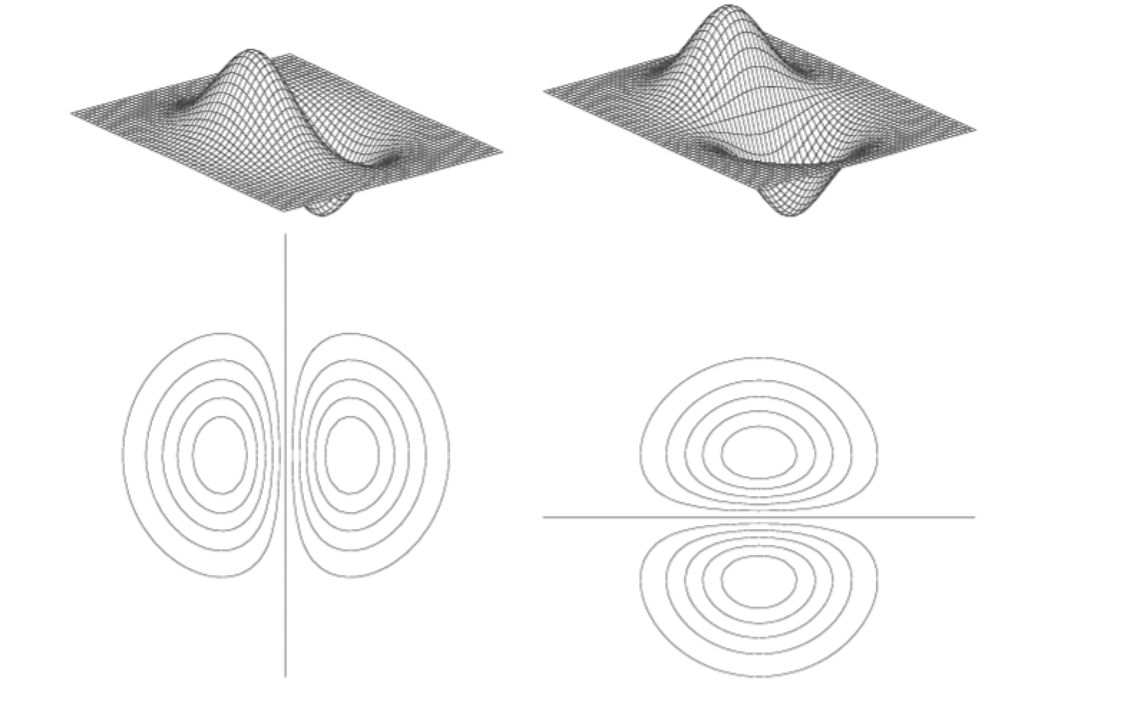
Image Differentiation: Understanding Gradients and Laplacians in Image Processing
Derivative filters provide a quantitative measurement for the rate of change in pixel brightness information present in a digital image. When a derivative filter is applied to a digital image, the resulting information about brightness change rates can be used to enhance contrast, detect edges and boundaries, and to measure feature orientation.
Image derivative is a mathematical operation applied to an image to compute the rate of change of intensity at each pixel. In simpler terms, it helps us understand how rapidly pixel values change from one location to another within an image. Image derivatives are crucial for various image processing tasks, including edge detection, feature extraction, and image enhancement.
Types of Image Derivatives
There are two primary types of image derivatives:
1. Gradient:
The gradient of an image measures the spatial intensity change in two directions: horizontal (x-axis) and vertical (y-axis). Mathematically, the gradient of an image f(x, y) is represented as ∇f(x, y) and is computed as follows:
Here, ∂f/∂x and ∂f/∂y are the partial derivatives of the image with respect to the x and y axes, respectively. The magnitude and direction of the gradient vector provide valuable information about the image's local features.
2. Laplacian:
The Laplacian of an image is a scalar function that represents the local second-order intensity variations. It is often used for detecting edges and points of interest within an image. Mathematically, the Laplacian of an image f(x, y) is represented as ∇²f(x, y) and is computed as follows:
I. Mathematical example of computing the gradient of a simple 3x3 image
3x3 grayscale image:
| 30 | 40 | 50 |
| 60 | 70 | 80 |
| 90 | 100| 110|

Gradient in the X-Direction (∂f/∂x):
To compute ∂f/∂x at the center pixel, we can use the finite difference formula:
So, the gradient in the x-direction (∂f/∂x) at the center pixel is 10.
Gradient in the Y-Direction (∂f/∂y):
To compute ∂f/∂y at the center pixel, we can use the same finite difference formula:
So, the gradient in the y-direction (∂f/∂y) at the center pixel is 30.
So, for the given image, at the center pixel (row 2, column 2), the gradient in the x-direction (∂f/∂x) is 10, and the gradient in the y-direction (∂f/∂y) is 30. These values represent the rate of change of intensity in the horizontal and vertical directions, respectively, at that specific pixel.
II. To compute the Laplacian derivative (∇²f) for the given 3x3 image example:
We need to calculate the second-order partial derivatives in both the x-direction (∂²f/∂x²) and y-direction (∂²f/∂y²) and then sum them. The Laplacian is defined as:
Second-Order Partial Derivative in the X-Direction (∂²f/∂x²):
To compute ∂²f/∂x² at the center pixel, we use the finite difference formula:
Second-Order Partial Derivative in the Y-Direction (∂²f/∂y²):
To compute ∂²f/∂y² at the center pixel, we use the finite difference formula:
Now, we can sum the second-order partial derivatives to calculate the Laplacian (∇²f):
For the given 3x3 image, the Laplacian (∇²f) at the center pixel is 0. This indicates that the pixel is in a region with no significant second-order intensity variations, which means it's relatively flat or uniform in intensity.
Applications of Image Derivatives
Edge Detection: Image gradients are widely used to identify edges in images, which are crucial for object recognition and segmentation.
Corner Detection: By analyzing the Laplacian of an image, corners and keypoints can be detected, aiding in image matching and alignment.
Image Enhancement: Derivatives can be used to enhance specific image features or details.
Optical Flow: In computer vision, the gradient of an image is used to calculate optical flow, which tracks the motion of objects in video sequences.
Summary

Reference:
https://en.wikipedia.org/wiki/Image_derivative
Computer Vision: Algorithms and Applications (Texts in Computer Science)